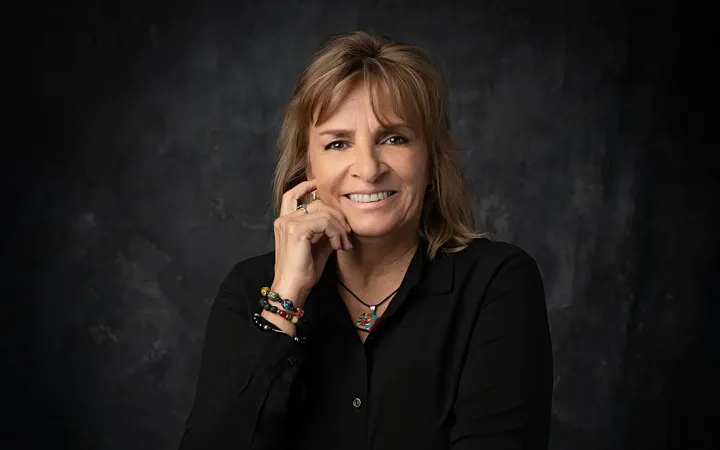Por Mariana Conde
Mirando a la distancia/muy linda ven mis ojos,
una hermosa damita/que calmará mi antojoLos Inesperados
“Mirando la damita”
Yo pensaba que la peor forma en la que podía dirigirse a mí un extraño era diciéndome amiga: ¿Cuánto de mandarina, amiga? ¿Amiga, qué te sirvo? Dame paso, amiga. Esto hasta que, desde hace varios años, ganó terreno como un virus el aberrante vocablo damita.
ODIO la palabra damita, no hay otra que me haga reaccionar con tal repulsión. Me parece que engloba con gran eficacia lo que está mal con la situación de la mujer, la última genialidad de la agresividad pasiva.
Dama, según el diccionario del español de México del COLMEX, significa: Mujer noble o distinguida: portarse como una dama, ser una dama.
¿Quién decide cuál es el comportamiento distinguido? Bajo esta misma luz, ¿cómo puede saber el mesero que me llama damita mientras me sirve los shots, si yo –antes de perder la compostura al calor de los mezcales– me conduzco con tal distinción y nobleza?
La palabra es como una manda, una condena, un grillete: te nombro dama porque es esperado que te comportes a la altura de ese concepto. Ahora, vamos a embarrarle el diminutivo. Es decir, se empieza con dama, pero para que no te creas mucho, vamos a minimizarlo con el ita. Entonces sí que estamos bien jodidas: hay que portarnos como un ejemplo de virtud, pero al mismo tiempo somos reducidas a una cosa casi de juguete que no comanda la dignidad que se le exige. Un verdadero oxímoron, o lo que es lo mismo, ganarse la rifa del tigre.
Detrás de esta fachada de deferencia y delicadeza en el trato hacia nosotras, hay en verdad un vehículo lingüístico de empequeñecimiento y una forma de seguir viendo a la mujer como débil, inferior y digna de requerir una protección no solicitada, como la que se prodiga a un niño, a una persona que sufre de demencia o una mascota.
A infantilizar y minimizar, sumamos el común aspecto sexualizante de infinidad de formas, en apariencia tiernas, de dirigirse a la mujer: mi piel, mi colita (aunque algunos no lo crean), cosita, muñeca, hembra, ricura.
Basta revisar el epígrafe de esta columna, donde el voyeur lo que quiere en realidad es “calmar sus antojos” con la mentada damita. Misma a la que implícitamente ha cosificado, como pone en evidencia cuando dice ver una hermosa damita, como quien ve una yegua, y no ver a una hermosa damita, a una persona. Veo un perro, una taza, pero veo a Manuel.
Como dice en su ensayo De seños, damitas y madrecitas la escritora Martha Robles: “Hay que insistir en que el lenguaje no se equivoca: los giros verbales, enmascarados o no, confirman el profundo desprecio popular a nuestra feminidad.”
¿Le dice alguien al señor de a un lado caballerito? No, nunca, impensable. Así como tampoco le grita una conductora de Uber en la calle cosita, chiquito o muñeco.
Lo que me parece más grave es que ya hay casos en los que algunas mujeres, casi siempre en la industria de la hospitalidad (restaurantes, hoteles), han adoptado el odiado término, sin duda emulando las “corteses” formas de sus compañeros o jefes. Espero que si tú eres una de ellas y me estás leyendo comprendas que esto no es un ataque, sino un llamado a la rebelión.
Las veces que he intentado sacudirme el denuesto al responder amablemente a mi interlocutor mejor miénteme la madre, por alguna razón, no han salido bien. ¿Qué recurso nos queda?
Algunas ideas:
- Decir asertivamente: no me gusta que me digan damita; señora o Mariana está bien.
- Responder con un caballerito cada vez que nos digan damita hasta causar desconcierto y que nos llamen de otra forma.
- Si nada funciona, recurrir al estilo de mi mamá que, al ser llamada mamita por un joven mesero, lo hizo arrepentirse como borracho jurado al contestarle: mamita, tu abuela.
Las opiniones expresadas son responsabilidad de sus autoras y son absolutamente independientes a la postura y línea editorial de Opinión 51.






Comments ()